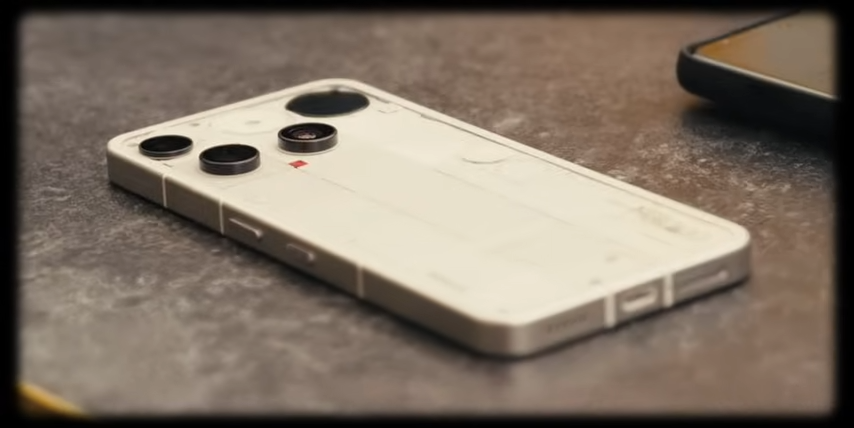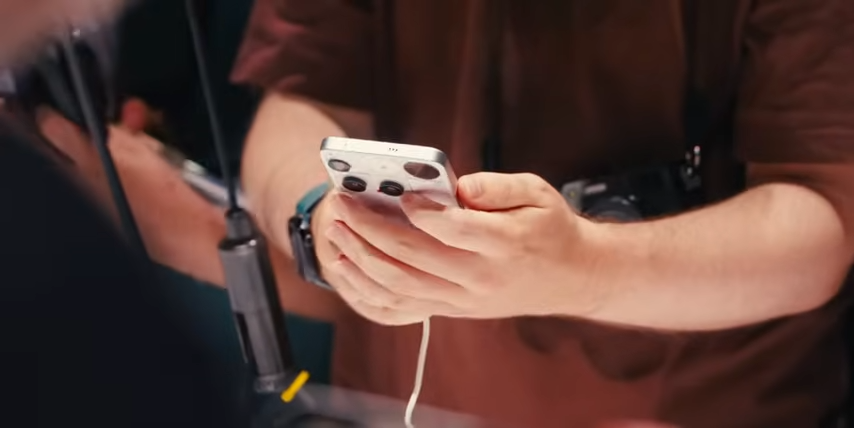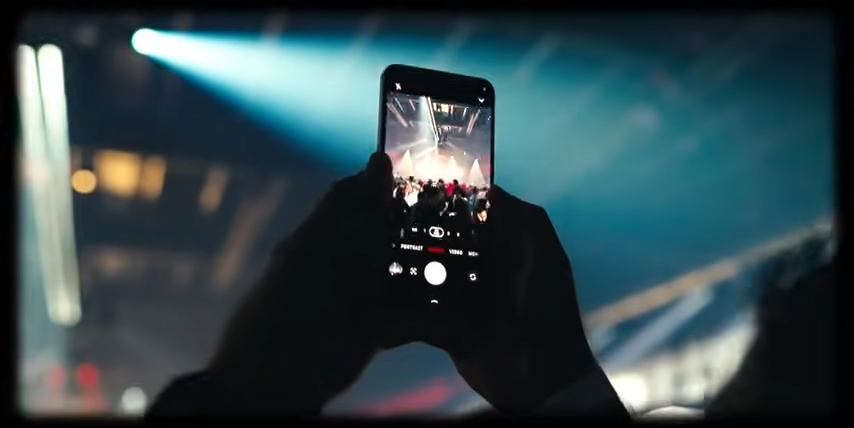The Nothing Phone 3 is finally in my hands, and I wanted to just sit down and share my honest thoughts.
I’ve been living with this phone for a couple of weeks, and that means I’ve hit the little annoyances, the genuinely clever ideas, and the “wait, what were they thinking?” design quirks that don’t show up in spec sheets.
So if you’re wondering whether the Nothing Phone 3 is the Android alternative you’ve been waiting for, or just another shiny slab with blinking lights, you’re in the right place.
Design & Build: Love It or Hate It
Pick up the Nothing Phone 3, and your first thought might be: Is this an iPhone?
That’s because the flat, polished outer rails feel practically identical. In fact, if you blindfolded me and handed me one, I’m not sure I could tell the difference.
But the giveaway is the new Essentials button on the side, which is a silvery extra control that is, frankly, awkwardly placed. I’ve lost count of how many times I’ve accidentally pressed it just by picking the phone up. Nothing says around one in five users “engage with it weekly,” but I do wonder how much of that is people actually using it versus people (like me) mis-pressing it constantly.

On the back, you’ve got what is fast becoming Nothing’s signature move: a love-it-or-hate-it design. This year, it’s even more polarizing. I’ve seen long-time fans say it’s a complete miss. Personally? I kind of like it. Phones have become boring slabs, and Nothing is at least trying to stand out.
Yes, the glyph matrix lights are a gimmick, but they’re also a conversation starter. And there’s a new haptic button back here that requires a serious shove to trigger. One of the demo features is “spin the bottle”… which I’m not sure anyone’s going to play with an £800 phone, but hey, points for trying.
The build itself is solid: Gorilla Glass Victus on the front, IP68 water resistance (though some rivals now hit IP69, which stings a little), and a size/shape that feels great in hand.
Nothing OS & Essential Space: Minimalist Meets Messy
On paper, Nothing OS is meant to be this clean, distraction-free interface. Black and white icons, stripped-back menus… Carl Pei stood on stage and called it “minimalism done right.” And yes, it looks slick.
In reality? I couldn’t live with it. When every app icon is just a monochrome blob, good luck finding what you’re looking for. I kept flicking past things because they all looked the same. Pretty, yes. Practical, not so much.
Then there’s the Essential Space, triggered by that side button I keep hitting by accident. The idea is actually clever: take a screenshot, and the phone pulls useful info out of it, like travel itineraries, QR codes, and event details, all neatly organised so you don’t have to keep digging through email attachments. When I used the Nothing Phone 3A, this was super handy for travel. On the 3, it’s still a great idea… just hampered by the button placement.
Unfortunately, software gremlins are everywhere right now. The built-in Essential Search (Nothing’s take on universal search plus a pinch of AI) broke for me completely. Every time I tried to use it, the phone demanded I pick a default search engine, and no matter what I tapped, it never actually worked.

And let’s not forget my Google Wallet fiasco. Every time I opened it, I was greeted with a warning that the device wasn’t secure for payments. Not ideal. Weirdly, NFC itself works fine for gym entry cards and scanners, but no bank cards allowed. Hopefully, that’s just a software update waiting in the wings.
Nothing has been clear about one thing: their focus until now has been hardware first. But they’ve also said they’re doubling the size of their software team this year to fix these kinds of issues. Which is good, because right now, Nothing OS feels like an ambitious sketch rather than a finished product.
Display & Performance: Bright on Paper, Slow in Reality
On the spec sheet, the Nothing Phone 3 sounds like it should light up a small village. Nothing claims a 4,500-nit peak brightness, which is right up there with the big flagships. But in day-to-day use? It doesn’t feel that bright. Step outside, and while you can still see the screen fine, other phones I’ve tested just punch harder.
And then there’s the auto-brightness curve. Walk into a sunny room or head outdoors, and the screen takes a good three to five seconds to ramp up. It’s not a deal-breaker, but it’s definitely noticeable if you’re used to instant adjustments from other devices.
Performance-wise, though, I’ve got no complaints. The Phone 3 runs on the Snapdragon 8S Gen 4 chip, not the fancy new “Elite” variant Qualcomm keeps bragging about. But honestly? It doesn’t matter. The phone feels fast, responsive, and never once lagged on me. I even shaved the animation speed down to 0.5x in developer settings, and the whole thing feels very smooth.
The only thing that bugs me isn’t the chip itself, but Qualcomm’s confusing lineup. I thought the “Elite” was supposed to be their next-gen leap, so why are we still seeing 8S chips hanging around? Either way, in real-world use, this thing is quick, and I can’t fault it.
Connectivity also deserves a shout. Tap-to-pay with NFC gym cards works instantly (better than my S25 Ultra, which is hilariously picky about positioning). The only snag is Google Wallet still waving that rooted-device warning, which I’ll chalk up to a Nothing OS bug until proven otherwise.
Bottom line: don’t sweat the silicon. The 8S Gen 4 may not be Elite in name, but it’s elite enough for everyday use.
Battery & Charging: Double Digits at Bedtime
This is the part that surprised me most. The Nothing Phone 3 packs a ~5,100 mAh silicon-carbon battery (depending on which spec sheet you read, some say closer to 6,000 mAh). On paper, that’s solid but not mind-blowing. In practice? It’s excellent.
Here’s how I measure battery life: not with screen-on hours, not with lab tests, but with a simple benchmark: does it last until bedtime without panic-charging? With the Nothing Phone 3, the answer has been a consistent yes. Most nights, I’d still be in the comfortable double digits, instead of limping along in single digits like I do with other flagships.
Charging is equally strong. 65W wired charging means you can juice it up quickly if you do need a top-up. Compared to the iPhone’s glacial speeds, this feels like warp drive.
But it’s not perfect. Yes, there’s wireless charging, but no Qi2 or MagSafe magnets. That means all those convenient snap-on chargers I use at home and in the car just don’t work here. And while OnePlus has solved this with optional MagSafe-style cases, Nothing’s official clear case doesn’t have magnets built in. Big missed opportunity.
So, the verdict on power: great longevity, fast wired charging, but frustratingly old-school wireless. For a phone that wants to be fun and futuristic, it’s annoying to be fiddling with placement on a flat charger in 2025.
Cameras: Solid Everyday Shooter, Silly Super Zoom
Here’s the thing with smartphone cameras in 2025: you really can’t buy a bad one anymore. Some are better, some are worse, but even the cheapest handsets produce some incredible photos.
That said, the Nothing Phone 3’s camera system is… solid. You get 4K 60fps on all four lenses (three on the back, one on the front), plus autofocus on the selfie camera, which is a nice touch. The telephoto lens also doubles as a macro, letting you get about 10cm away from a subject without everything turning into mush.

Day-to-day, it does exactly what you want: quick snaps of kids running around, friends pulling poses, random street shots, and it nails them without fuss. I even caught some burst shots of my mate Darius outside the launch event mid-breakdance, and the results were sharp enough to freeze the action.
But there’s one big caveat: the much-hyped AI Super Zoom. It promises up to 60x digital zoom, and yes, technically it can do it. But past 3x optical, things fall apart quickly. Push further, and it starts looking like an oil painting rather than a photo. Cool for marketing slides, not something I’d rely on.
Glyph Matrix: Gimmick or Genuinely Useful?
The Glyph lights are Nothing’s calling card at this point. They’ve always been a bit of a party trick, and the Phone 3 doubles down with a new Glyph Matrix system and even a haptic back button to trigger it.
On the fun side: yes, you can play things like spin the bottle with the LEDs. (Though seriously, who’s doing that with an £800 phone? One bad spin and you’re buying a new screen.) But beyond the gimmicks, there are some genuinely useful touches.
The best example? Charging feedback. Drop the phone face down at night, plug it in, and the Glyph shows you the charging percentage at a glance. No need to pick it up, tap the screen, or squint. It’s subtle, but I actually found myself using it more than expected.
Still, let’s be honest: most of this is flair. Nothing says eight out of ten people keep the Glyph enabled, but I do wonder how many of those are just leaving it on by default, versus actively using it.
Either way, the Glyph remains peak Nothing: half practical, half gimmick, and 100% designed to make people ask, “What phone is that?”
Price & Value: Fun vs. Practical
The Nothing Phone 3 comes in at $799 for the 256GB model and $899 for the 512GB model. Here in the UK, that puts it right up against the OnePlus 13 at around £819. And honestly, this is where the comparisons get interesting.
On paper, the OnePlus looks like the smarter buy:
- Snapdragon 8 Elite (instead of the 8S Gen 4)
- Thinner design
- Better cameras overall
- Built-in MagSafe-style wireless charging
Meanwhile, the Nothing Phone 3 fights back with personality. It’s different. It’s fun. And if you’re the kind of person who wants a phone that sparks conversation, the OnePlus just feels… well, a bit boring.
That’s the real divide here: spec sheet vs. vibe. The Nothing Phone 3 doesn’t win every benchmark, but it does win on individuality. And for some people (myself included), that’s worth paying for.
Still, if you need the “safe” choice with fewer bugs, faster updates, and a more polished overall experience, OnePlus (or even midrange Pixel) might make more sense.
Verdict on the Nothing Phone 3: Something from Nothing
The Nothing Phone 3 is one of the most interesting phones I’ve used this year. It’s bold, it’s playful, and it has personality… something that’s sorely missing in a sea of boring black rectangles.
But it’s also buggy. The Google Wallet issue alone could be a deal-breaker if you rely on tap-to-pay every day. And the lack of MagSafe/Qi2 is hard to forgive in 2025, when so many of us have chargers and car mounts built around it.
So, should you buy it?
- If you want a phone that looks different, lasts all day, and makes people ask, “What is that?”... then yes, this is a solid choice.
- If you’d rather have polish, stable software, and fewer quirks, you might be happier with a OnePlus, Pixel, or iPhone.
For me, the Nothing Phone 3 is exactly what it set out to be: a fun alternative to the boring mainstream. It’s not perfect, but it’s far from boring.


